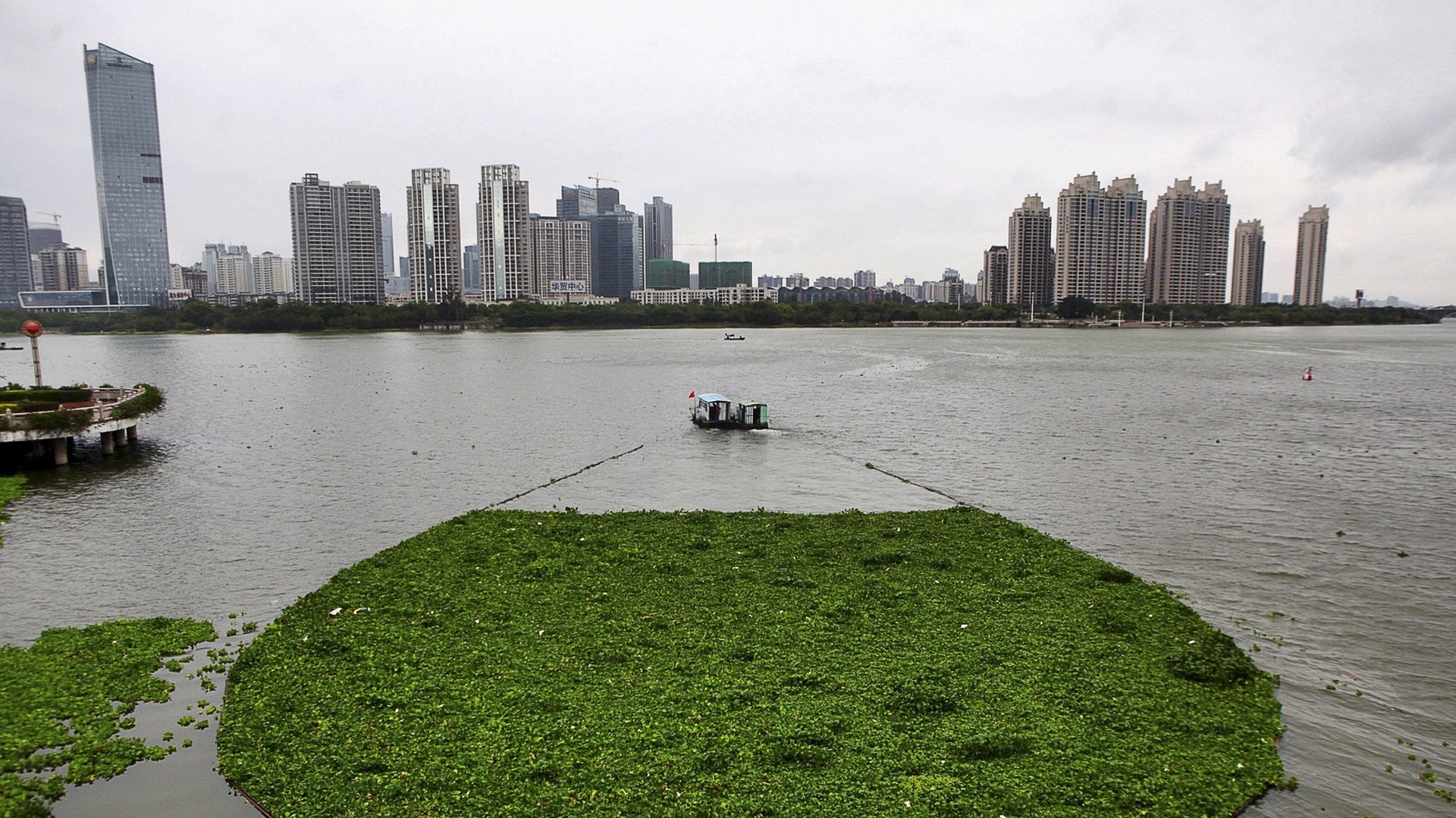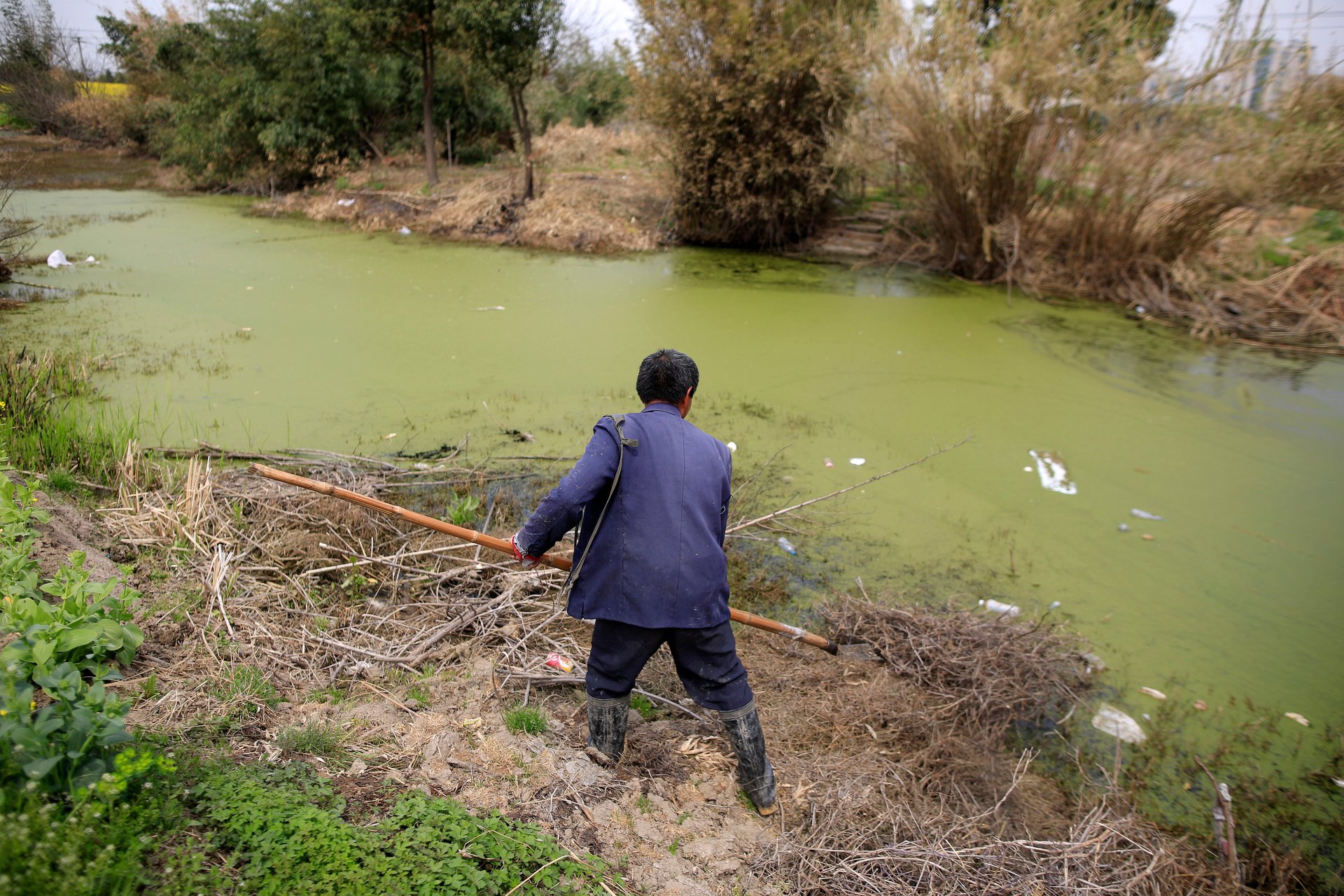China’s housing boom has destroyed its biggest cities’ drinking water
More than 70% of the watersheds that supply water to China’s 30 largest cities are severely polluted, threatening the water supply for hundreds of millions of people, a recent report finds.


More than 70% of the watersheds that supply water to China’s 30 largest cities are severely polluted, threatening the water supply for hundreds of millions of people, a recent report finds.
The China Urban Water Blueprint, published Monday (Apr. 18) by The Nature Conservancy, analyzed the 135 surface water sources tapped by China’s 30 largest, fastest-growing cities, including Beijing, Shanghai, Guangzhou and Wuhan. Of these, 73% “face medium to high pollution levels,” affecting the lives of 860 million people in areas that contributed about 55% of China’s GDP in 2010.
Roughly half of China’s water pollution is linked to fertilizers, pesticides, and livestock waste, the report says. Poorly treated sewage and industrial spills are other sources.

The catchments provide 93% of the drinking water supply to the 30 surveyed Chinese cities, the report says. Drinking water is typically channeled through a large network of reservoirs, canals and pipelines, and most urban water catchments rely on natural resources such as forests and wetlands to protect water quality, the report notes.
“As cities grow and these natural capital resources are degraded, water quality benefits are diminished, making it more difficult and far more expensive to provide clean water to urban residents,” the scientists write.
The problem has been especially acute in China because government officials have been maximizing local economic growth through the sale and development of real estate, which accounts for about 35% of local government revenue, the report notes. Local officials care more about GDP growth when they are in office then long-term investment in catchment conservation, the report explains.
The report says natural land cover is steadily decreasing. One-third of the 110 catchments that provide water to 24 of the surveyed cities are surrounded by land that is more than 50% developed, instead of remaining in its natural state.
China’s urban residents typically get filtered water through their taps and boil it before drinking.
At least one-third of China’s lakes and rivers are too polluted for human use, according to the latest environmental report issued in 2013 by the Ministry of Environmental Protection.
The Nature Conservancy’s report also finds that less than 6% of China’s land mass provides more than two-thirds of the country’s water supply. To meet the water shortage, China is moving more than a River Thames of water across the country, under a project started in 2014.